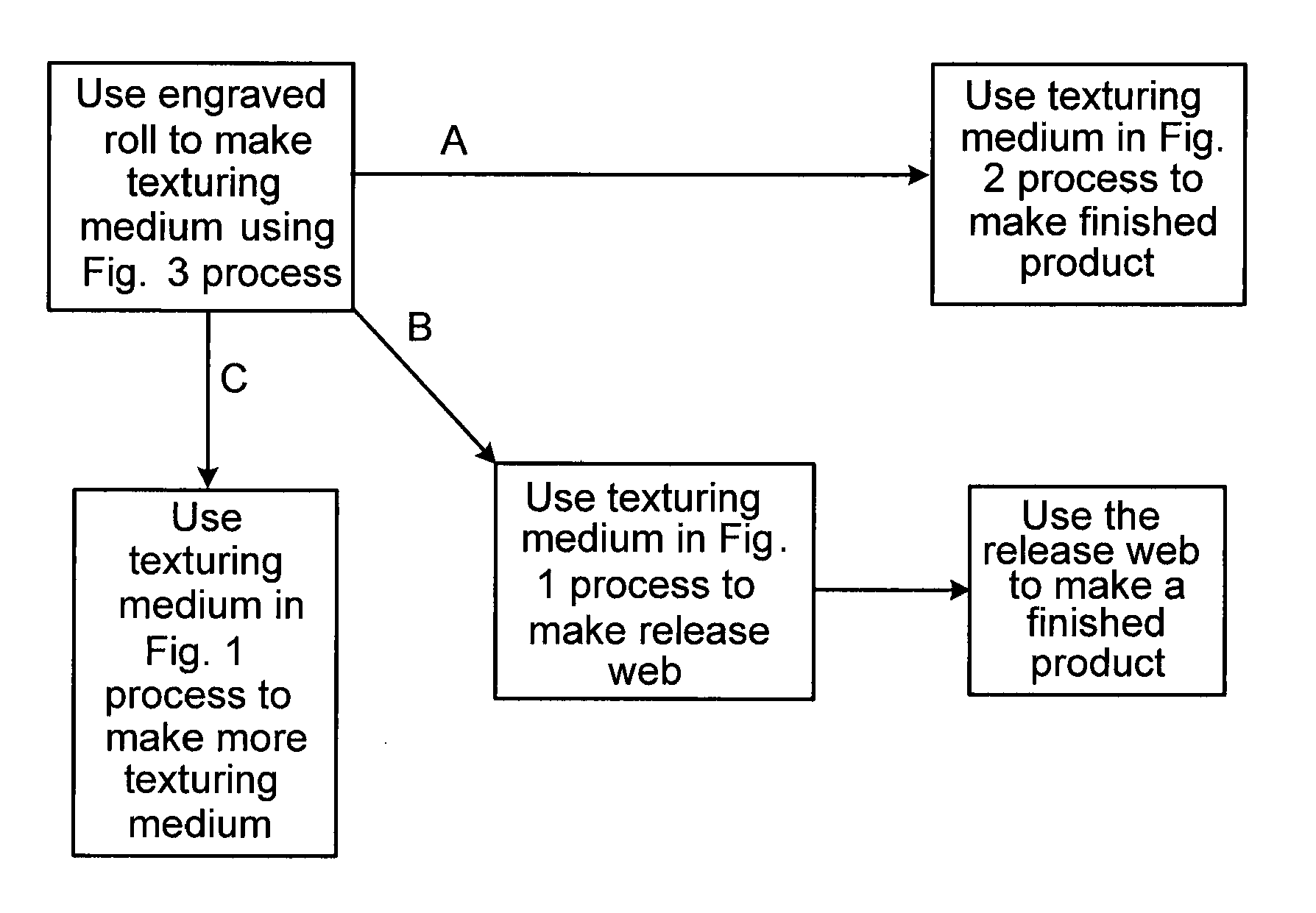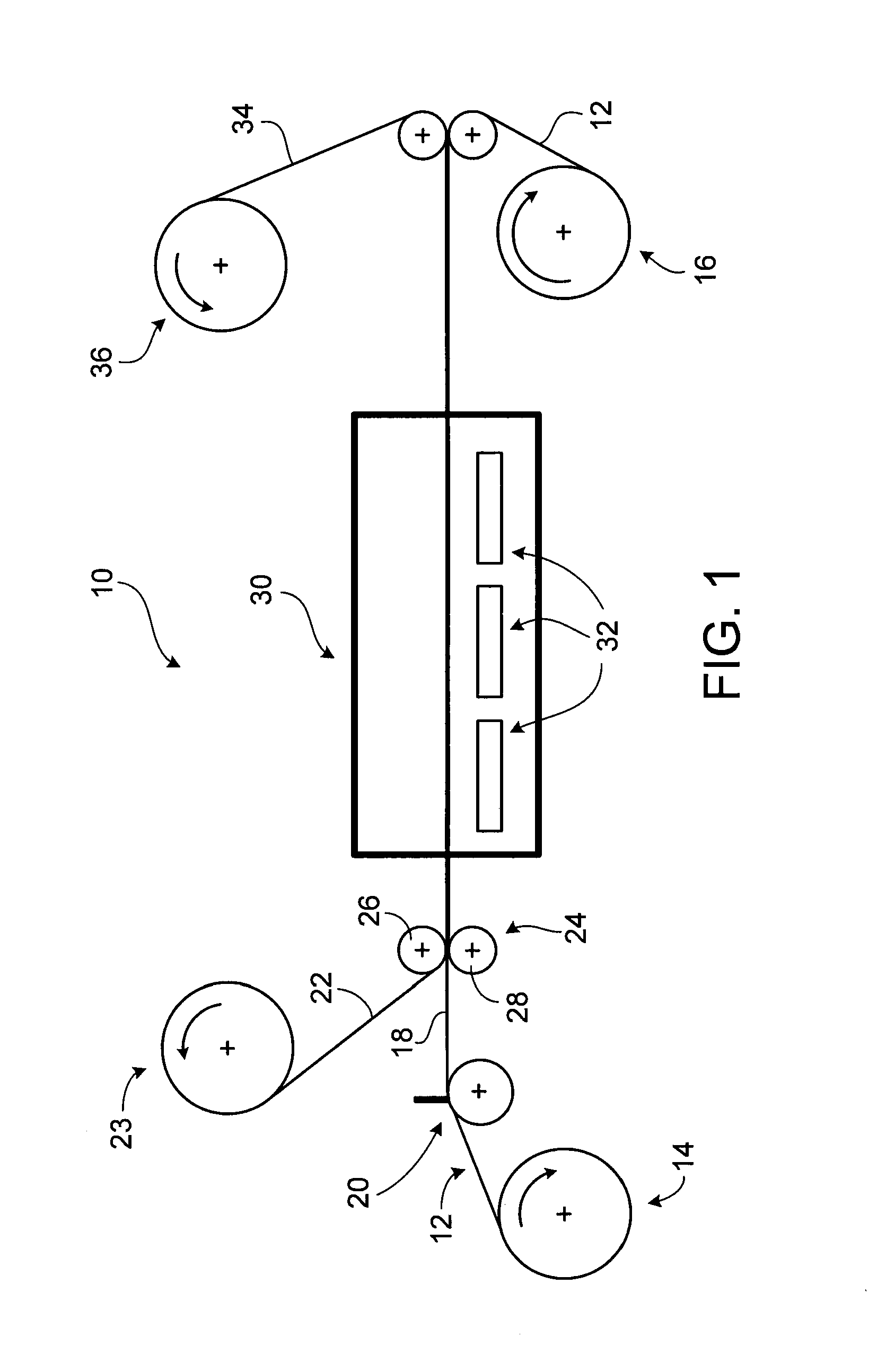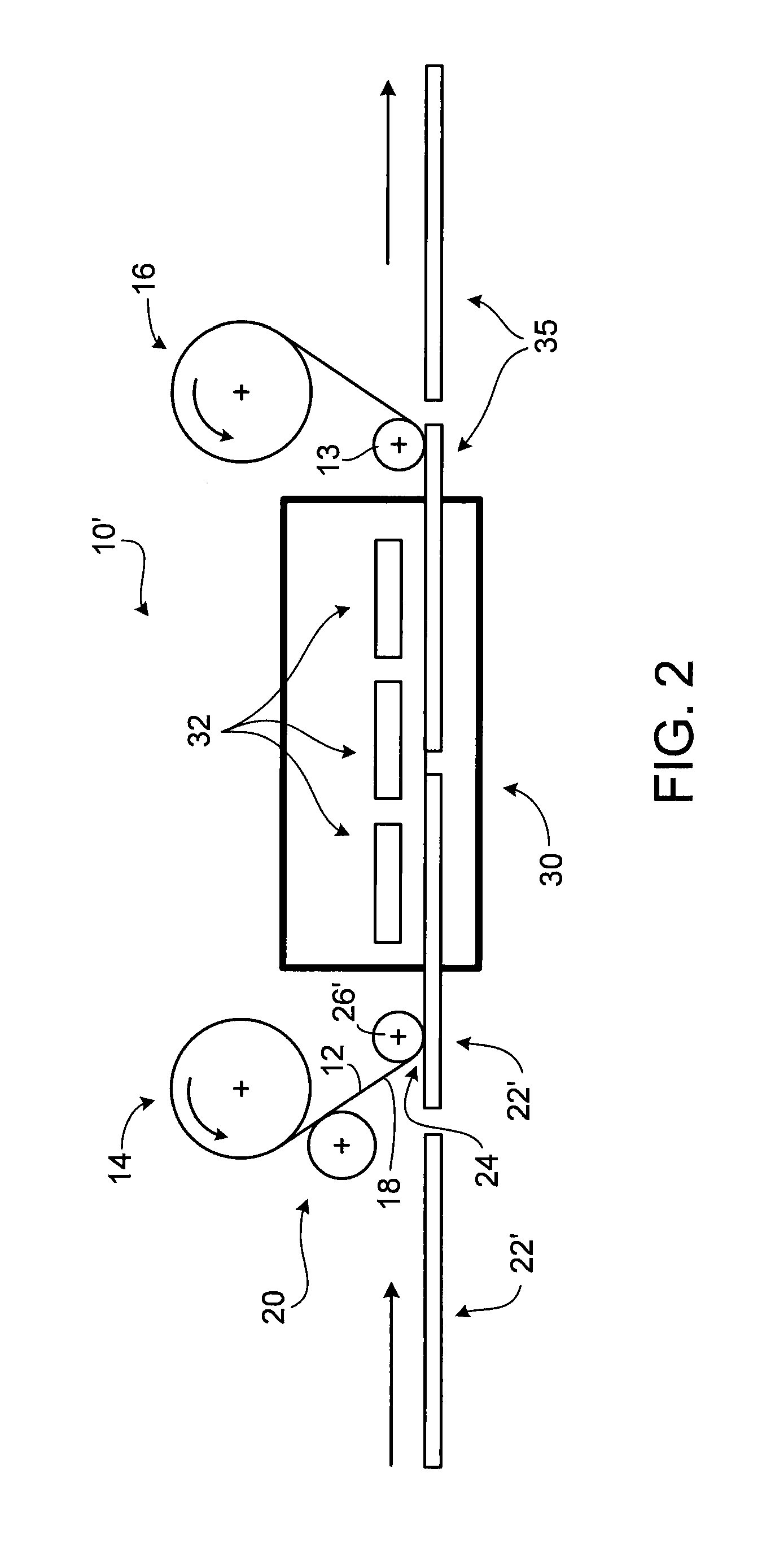Materials Having a Textured Surface and Methods for Producing Same
a technology of textured surfaces and materials, applied in the direction of manufacturing tools, instruments, transportation and packaging, etc., can solve the problems of coating quality problems, release from embossed rolls,
- Summary
- Abstract
- Description
- Claims
- Application Information
AI Technical Summary
Benefits of technology
Problems solved by technology
Method used
Image
Examples
Embodiment Construction
Overview
[0027]In the following description, we will first describe how the texturing processes disclosed herein may be used to manufacture release webs, i.e., web or sheet materials that may be used in the casting processes described above in the Background section or in other processes such as pressing, laminating, vulcanizing and roll curing. For example, a release web manufactured in this manner can subsequently be used as a mold to cast a finished product that has a desired surface texture that is the inverse of the texture on the release film. Next, we will describe how the processes disclosed herein can be used to directly form a finished product that comprises a substrate, and, on an exposed surface of the substrate, a cured coating having a surface texture that is the inverse of the texture on the texturing medium. Finally, we will describe preferred manners by which the texturing medium used in the processes disclosed herein can be manufactured.
Manufacturing Release Webs
[00...
PUM
| Property | Measurement | Unit |
|---|---|---|
| temperature | aaaaa | aaaaa |
| viscosity | aaaaa | aaaaa |
| viscosity | aaaaa | aaaaa |
Abstract
Description
Claims
Application Information
 Login to View More
Login to View More - R&D
- Intellectual Property
- Life Sciences
- Materials
- Tech Scout
- Unparalleled Data Quality
- Higher Quality Content
- 60% Fewer Hallucinations
Browse by: Latest US Patents, China's latest patents, Technical Efficacy Thesaurus, Application Domain, Technology Topic, Popular Technical Reports.
© 2025 PatSnap. All rights reserved.Legal|Privacy policy|Modern Slavery Act Transparency Statement|Sitemap|About US| Contact US: help@patsnap.com



